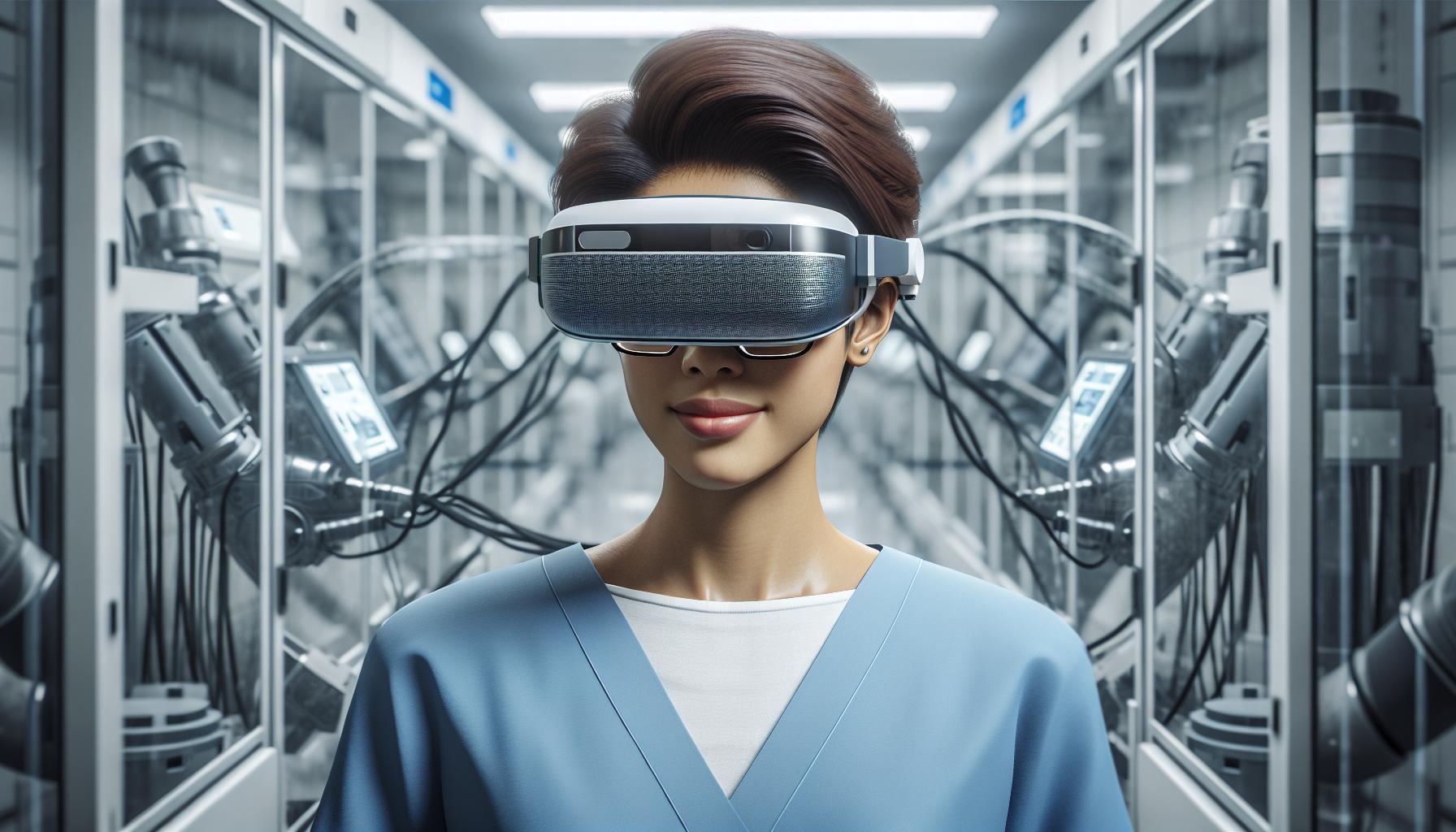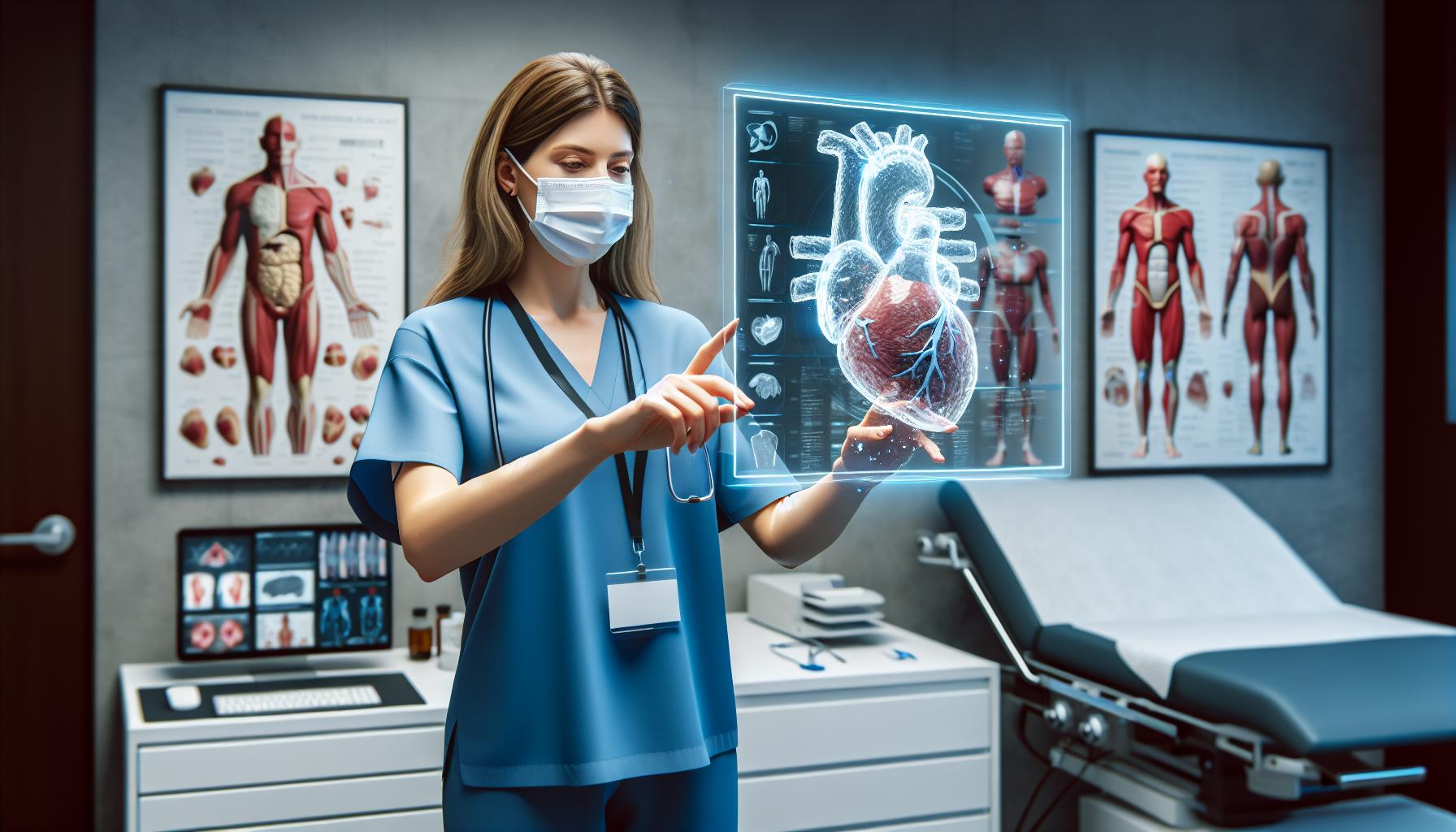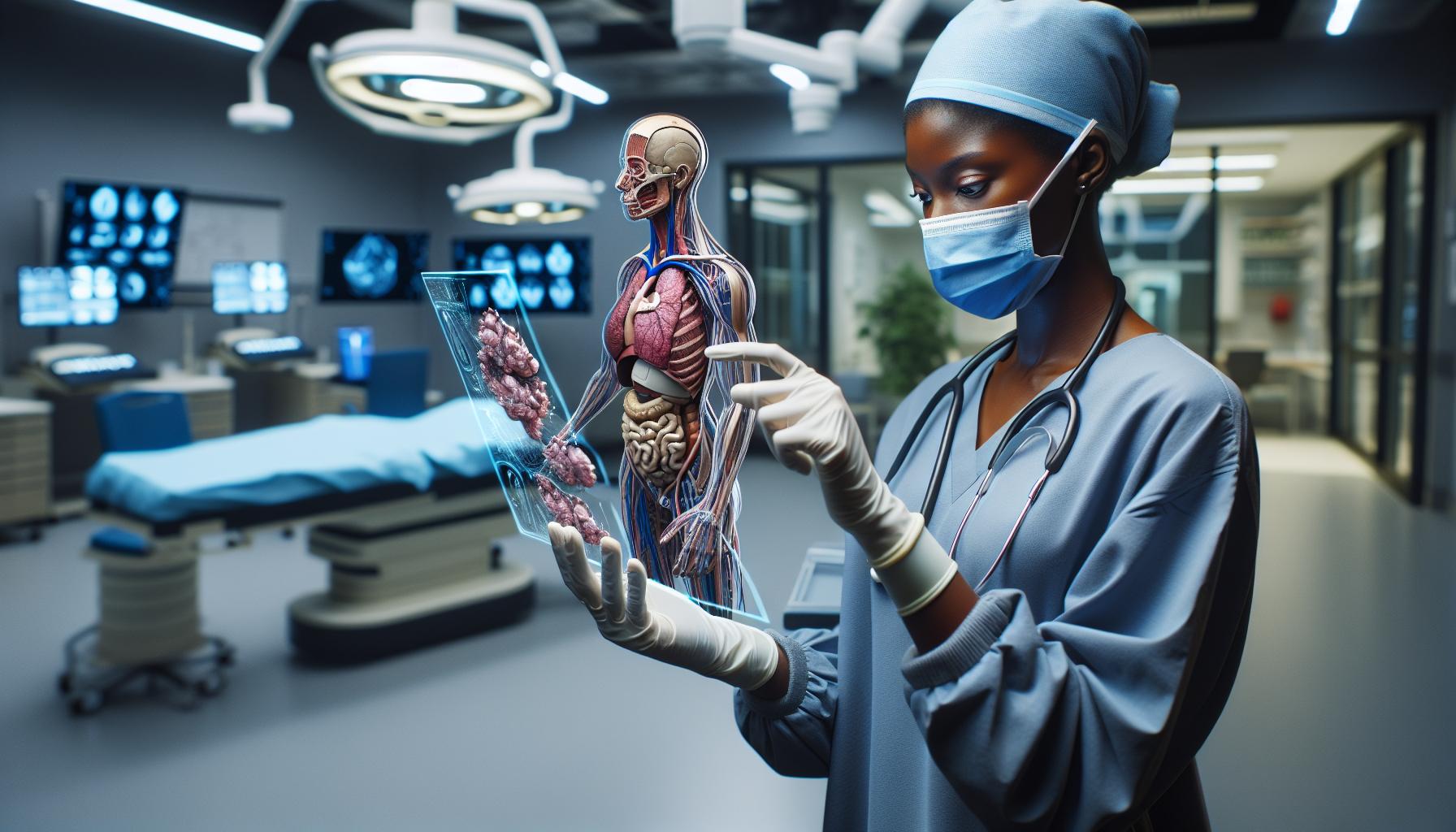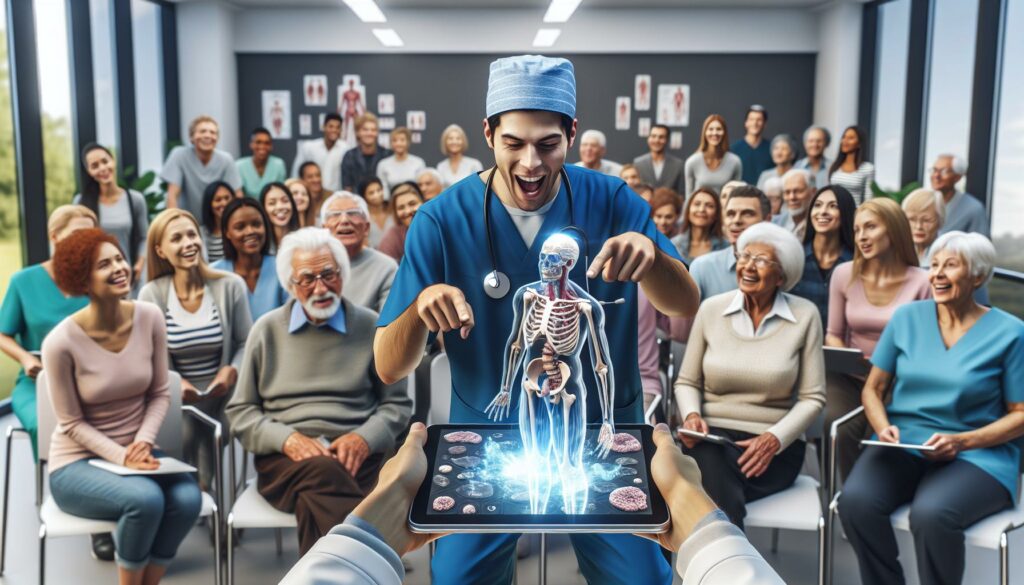Imagine walking into a doctor’s office and instead of the usual awkward small talk, you’re greeted by a holographic doctor who’s ready to diagnose your ailment with a smile and a virtual stethoscope. Welcome to the world of augmented reality in medical services, where healthcare gets a high-tech makeover that even sci-fi fans would envy.
This innovative technology is not just about flashy visuals; it’s transforming patient care in ways that make waiting rooms feel less like a scene from a horror movie. With AR, patients can visualize their treatment options, making complex procedures feel less daunting. So, buckle up as we explore how augmented reality is shaking up the medical field and turning the patient experience into something truly extraordinary.
Funtechs.uk/ Augmented Reality in Medical Services Changing Patien/
Augmented reality (AR) significantly impacts medical services by enhancing patient engagement and understanding. Patients can visualize complex procedures through AR, reducing anxiety associated with medical diagnostics. Healthcare professionals utilize AR to demonstrate treatment options, ensuring individuals grasp the implications of each choice.
Training for medical students benefits from AR as well. They experience realistic simulations that help develop critical skills in a safe environment. Instruments appear in a 3D representation, allowing learners to practice and refine their techniques.
Surgeons adopt AR during operations to overlay critical information onto the surgical field. By streaming vital data in real time, they can make more informed decisions and minimize potential risks. Additionally, pre-operative planning becomes more efficient with AR, offering insights into anatomy that traditional methods may overlook.
Implementation of AR in remote consultations brings experts to patients, regardless of location. Specialists can guide individuals through procedures using AR visuals, leading to enhanced outcomes and patient satisfaction. Studies indicate that approximately 70% of patients report greater confidence in their medical decisions when exposed to AR technologies.
Institutions integrating AR into their practices witness improved communication and comprehension among patients and providers alike. The transformative capabilities of AR create a more interactive healthcare environment that fosters collaboration and trust. As the technology continues to advance, the potential to reshape patient care and education grows substantially.
Key Features of Funtechs.uk

Funtechs.uk integrates cutting-edge technologies that enhance medical services through augmented reality. Features centered on innovation drive patient engagement and improve healthcare delivery.
Innovative Technologies
Innovative technologies employed by Funtechs.uk leverage augmented reality to transform traditional medical practices. AR applications provide visualizations that simplify complex medical concepts. Surgeons access real-time data during procedures, which leads to improved precision. Medical professionals utilize simulations for training, fostering skill development in a safe environment. Patients can explore treatment options interactively, reducing anxiety related to medical decisions. This integration not only streamlines care but increases patient confidence. Institutions adopting these technologies report enhanced communication, resulting in a more informed patient population.
User-Friendly Interface
User-friendly interfaces characterize Funtechs.uk’s approach to AR in medical services. Design simplicity ensures patients find navigation intuitive. Customizable features enhance individual user experiences, catering to diverse needs. Healthcare providers navigate easily, promoting efficient use of AR tools during consultations. Clear graphics and straightforward instructions facilitate understanding, enabling users to access relevant information swiftly. This emphasis on usability leads to higher adoption rates among both patients and professionals. Simplified interactions foster meaningful connections, creating a supportive environment in healthcare settings.
Benefits of Augmented Reality in Patient Care

Augmented reality significantly improves patient care by enhancing the overall experience and understanding of medical processes.
Enhanced Visualization
Enhanced visualization through AR helps patients grasp complex medical procedures. Patients can view 3D anatomical models, making it easier to comprehend their conditions. When patients understand their anatomy and treatment plans, they gain confidence in their decisions. For instance, a patient might see an interactive representation of a surgical procedure, resulting in reduced anxiety. Surgeons also benefit, as they can show real-time overlays of vital information during consultations. Utilizing AR, healthcare providers bridge the gap between medical jargon and patient comprehension, fostering informed choices.
Improved Patient Engagement
Improved patient engagement emerges as AR technology offers interactive experiences. Patients can participate in their care by visualizing treatment options. Engagement increases when individuals actively explore their health scenarios through AR tools. Medical students also enjoy enriched learning that translates to better patient interactions. By merging education and patient care, AR creates a collaborative environment. Patients who are more involved in their healthcare journey often feel empowered, leading to higher satisfaction levels. Enhanced communication using AR fosters a sense of partnership between patients and healthcare providers.
Case Studies and Examples

Augmented reality in medical services has demonstrated significant advancements through various case studies. These examples illustrate the transformative impact AR technology has on patient care and medical education.
Successful Implementations
Hospitals around the world adopt AR for surgical training. Various medical institutions utilize AR simulations to train students on complex procedures. An example includes a renowned medical university that enabled students to practice on 3D models before working on actual patients. Another instance occurs in an oncology clinic, where AR helps visualize tumor locations during biopsies, enhancing precision. These implementations foster a deeper understanding, equipping both students and professionals with vital skills.
Results and Feedback
Patients report increased satisfaction as they engage with AR applications. Surveys indicate that 85% of patients feel more informed about their treatment options after utilizing AR tools. Additionally, healthcare providers observe improved communication with patients, noting stronger connections and decreased anxiety levels. Feedback from surgeons highlights enhanced operational efficiency due to immediate access to critical data. These positive outcomes underscore the benefits of integrating AR in healthcare settings, promoting a more interactive and effective patient experience.
Future Trends and Developments
The landscape of augmented reality in medical services continues to evolve, with innovative technologies paving the way for enhanced patient care.
Emerging Technologies
Artificial intelligence enhances AR applications by personalizing patient experiences and recommendations. Virtual reality also integrates with AR to create immersive training modules for medical students. Wearable devices provide real-time patient monitoring, collecting data that informs both AR applications and treatment decisions. Drones equipped with AR capabilities promise quicker delivery of medical supplies, improving response times in emergencies. Additionally, advancements in 5G technology allow for seamless connectivity, which enhances remote consultations and real-time data sharing among healthcare professionals. These emerging technologies contribute significantly to optimizing healthcare delivery and improving patient experiences.
Potential Challenges
Implementing AR in medical services still presents several challenges. High costs associated with AR technology can deter healthcare providers from widespread adoption. Ensuring user-friendly design is crucial, as complex interfaces can confuse both patients and professionals. Data privacy concerns also arise, with sensitive patient information at risk during AR interactions. Integrating AR into existing systems poses compatibility issues, complicating deployment and user training. Moreover, healthcare providers must address potential resistance from staff who may be hesitant to adopt new technology. These challenges require careful consideration to maximize the benefits of augmented reality in healthcare.
Augmented reality is revolutionizing the medical landscape by enhancing patient engagement and understanding. As AR technology continues to evolve its integration into healthcare practices is becoming increasingly essential. This innovative approach not only improves patient confidence but also fosters better communication between patients and providers.
With the potential to streamline complex procedures and enhance training for medical professionals AR stands poised to shape the future of healthcare. As institutions like Funtechs.uk lead the charge in implementing these technologies the benefits for both patients and healthcare providers will only continue to grow. Embracing AR in medical services is not just a trend but a vital step toward a more interactive and effective healthcare experience.

